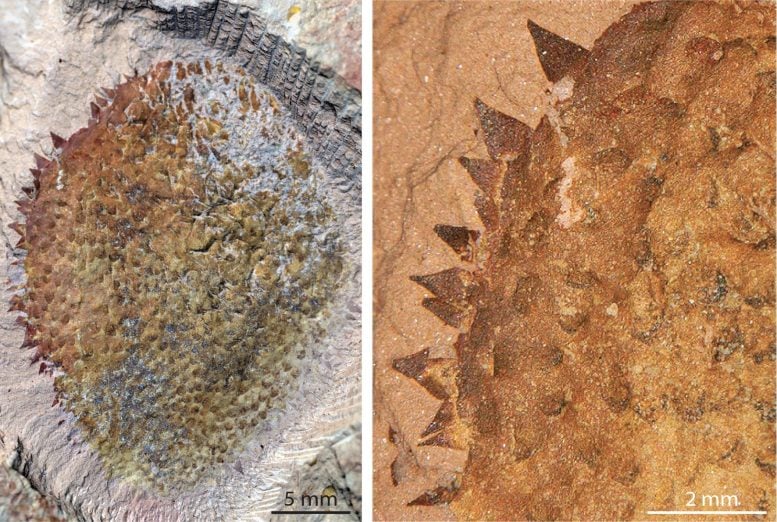
Researchers discovered Shishania aculeata, an ancient mollusk dating back 500 million years, in China’s Yunnan Province. Unlike modern mollusks, Shishania lacked a shell and was covered in chitin spines. This find offers unique insights into the early evolution of mollusks, suggesting an armored, slug-like ancestor before the development of shells. The image above depicts the complete specimen of Shishania aculeata seen from the dorsal (top) side (left). Spines covering the body of Shishania aculeata (right). Credit: G Zhang/L Parry
The newly discovered fossil of Shishania aculeata, an early mollusk without a shell but covered in protective spines, offers new insights into molluscan evolution, indicating a primitive, slug-like form during the Cambrian period.
Researchers have discovered a new species of mollusk that lived 500 million years ago. The new fossil, called Shishania aculeata, reveals that the most primitive mollusks were flat, shell-less slugs covered in a protective spiny armor. The findings were recently published in the journal Science.
Unveiling Prehistoric Molluscan Life
Shishania aculeata was found in exceptionally well-preserved fossils from eastern Yunnan Province in southern China dating from a geological Period called the early Cambrian, approximately 514 million years ago. The specimens of Shishania are all only a few centimeters long and are covered in small spikey cones (sclerites) made of chitin, a material also found in the shells of modern crabs, insects, and some mushrooms.
Specimens that were preserved upside down show that the bottom of the animal was naked, with a muscular foot like that of a slug that Shishania would have used to creep around the seafloor over half a billion years ago. Unlike most mollusks, Shishania did not have a shell that covered its body, suggesting that it represents a very early stage in molluscan evolution.
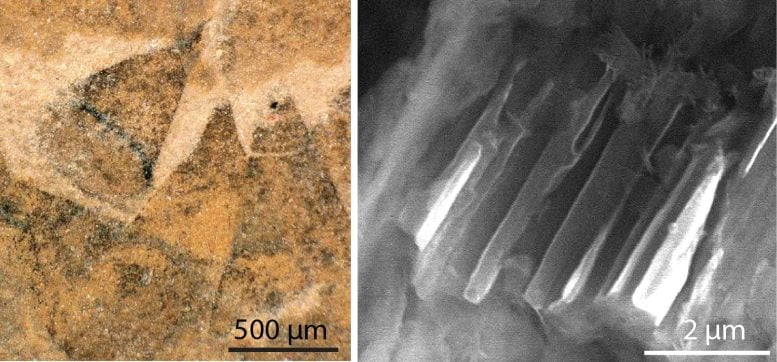
Conical spines that cover the body of Shishania aculeata (left). Electron microscope image of a conical spine showing the microscopic channels preserved inside (right). Credit: G Zhang/L Parry
Modern molluscs have a dizzying array of forms and include snails, clams, and even highly intelligent groups such as squids and octopuses. This diversity of molluscs evolved very rapidly a long time ago, during an event known as the Cambrian Explosion when all the major groups of animals were rapidly diversifying. This rapid period of evolutionary change means that few fossils have been left behind that chronicle the early evolution of mollusks.
“Trying to unravel what the common ancestor of animals as different as a squid and oyster looked like is a major challenge for evolutionary biologists and paleontologists – one that can’t be solved by studying only species alive today. Shishania gives us a unique view into a time in mollusk evolution for which we have very few fossils, informing us that the very earliest mollusk ancestors were armored spiny slugs, prior to the evolution of the shells that we see in modern snails and clams,” said Corresponding author Associate Professor Luke Parry, Department of Earth Sciences, University of Oxford.
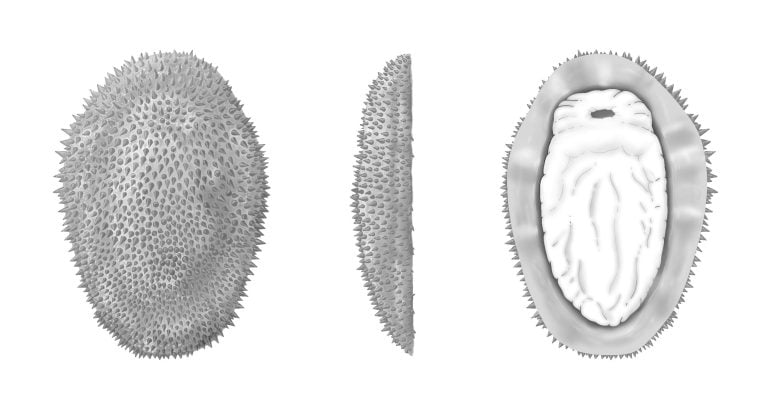
Artist’s reconstruction of Shishania aculeata as it would have appeared in life as viewed from the top, side, and bottom (left to right). Credit: M. Cawthorne
Detailed Analysis of Shishania’s Structure
Because the body of Shishania was very soft and made of tissues that aren’t typically preserved in the fossil record, the specimens were challenging to study, as many of the specimens were poorly preserved.
First author Guangxu Zhang, a recent PhD graduate from Yunnan University in China who discovered the specimens said: “At first I thought that the fossils, which were only about the size of my thumb, were not noticeable, but I saw under a magnifying glass that they seemed strange, spiny, and completely different from any other fossils that I had seen. I called it “the plastic bag” initially because it looks like a rotting little plastic bag. When I found more of these fossils and analyzed them in the lab I realized that it was a mollusk.”
Parry added: “We found microscopic details inside the conical spines covering the body of Shishania that show how they were secreted in life. This sort of information is incredibly rare, even in exceptionally preserved fossils.”
The spines of Shishania show an internal system of canals that are less than a hundredth of a millimeter in diameter. These features show that the cones were secreted at their base by microvilli, tiny protrusions of cells that increase surface area, such as in our intestines where they aid food absorption.
Evolutionary Insights from Shishania Fossils
This method of secreting hard parts is akin to a natural 3D printer, allowing many invertebrate animals to secrete hard parts with huge variations of shape and functions from providing defense to facilitating locomotion.
Hard spines and bristles are known in some present-day mollusks (such as chitons), but they are made of the mineral calcium carbonate rather than organic chitin as in Shishania. Similar organic chitinous bristles are found in more obscure groups of animals such as brachiopods and bryozoans, which together with mollusks and annelids (earthworms and their relatives) form the group Lophotrochozoa.
Parry added: “Shishania tells us that the spines and spicules we see in chitons and aplacophoran mollusks today actually evolved from organic sclerites like those of annelids. These animals are very different from one another today and so fossils like Shishania tell us what they looked like deep in the past, soon after they had diverged from common ancestors.”
Co-author Jakob Vinther at the University of Bristol said: “Molluscs today are extraordinarily disparate and they diversified very quickly during the Cambrian Explosion, meaning that we struggle to piece together their early evolutionary history. We know that the common ancestor of all mollusks alive today would have had a single shell, and so Shishania tells us about a very early time in mollusk evolution before the evolution of a shell.”
Co-corresponding author Xiaoya Ma (Yunnan University and University of Exeter) said: “This new discovery highlights the treasure trove of early animal fossils that are preserved in the Cambrian rocks of Yunnan Province. Soft bodied mollusks have a very limited fossil record, and so these very rare discoveries tell us a great deal about these diverse animals.”
Reference: “A Cambrian spiny stem mollusk and the deep homology of lophotrochozoan scleritomes” by Guangxu Zhang, Luke A. Parry, Jakob Vinther and Xiaoya Ma, 1 August 2024, Science.
DOI: 10.1126/science.ado0059

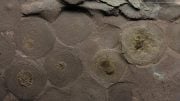
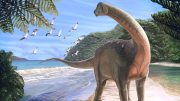
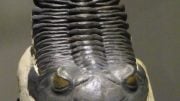
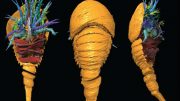
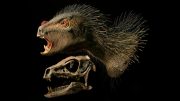
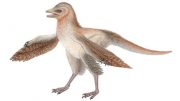
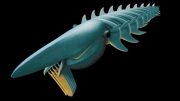
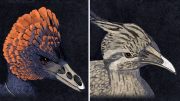
Be the first to comment on "“Completely Different” – Discovery of Strange 514-Million-Year-Old Slug Rewrites Our Understanding of Sea Creatures"